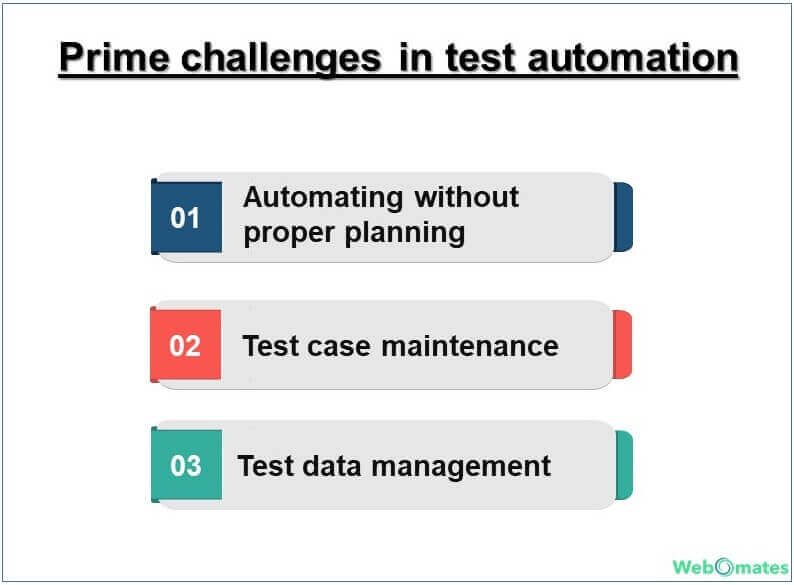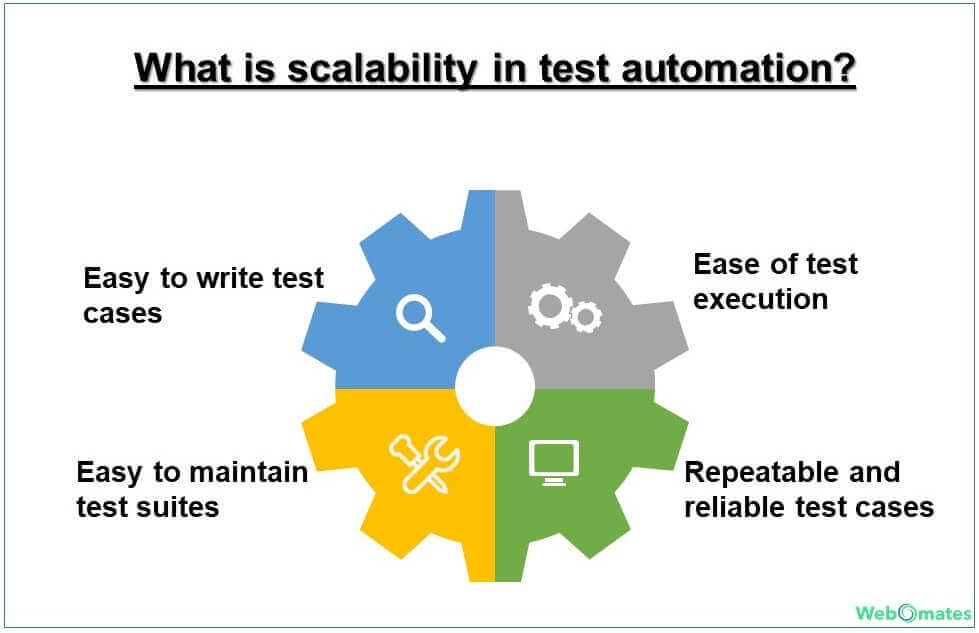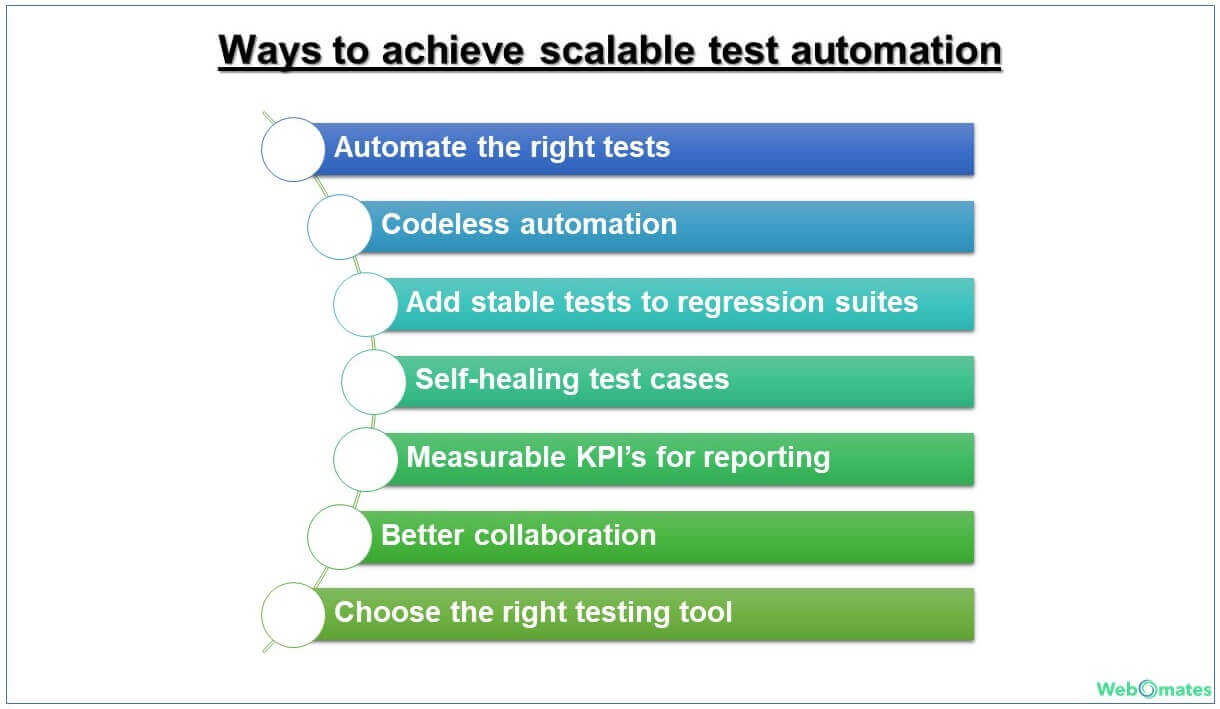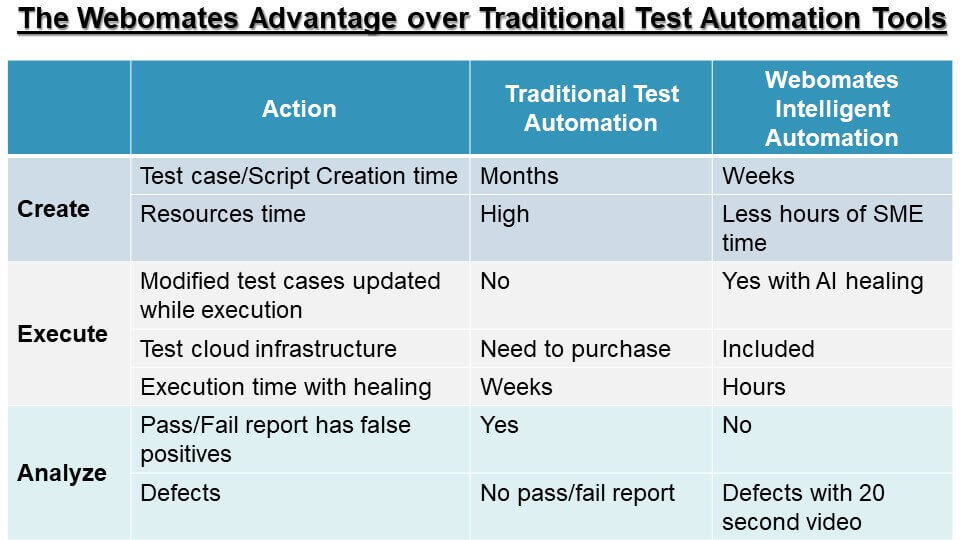What is test automation?
Test automation, which is the key to continuous testing, is a technique to automate predefined repetitive testing tasks, using various test automation tools and testing scripts. In an increasingly agile world, test automation aids in improving feature velocity and reducing the duration of release cycles.
According to the Markets and Markets report, the global Automation testing market size is expected to grow to USD 49.9 billion by 2026, at a Compound Annual Growth Rate (CAGR) of 19.2% during the forecast period (2021-2026).
But the question is, are the organizations equipped well to handle this growth?
How easy is it to automate the testing process, and make it scalable enough to sustain multiple changes? There are several challenges in automating the test suites. We will be listing the major roadblocks here for a quick glance. For a more detailed account, you can read our blog “Challenges in test automation”.

What is scalability in test automation?
Once you have identified and overcome the challenges to successfully automate your test suites, it is time to ensure that your automated testing process is scalable and can cater to the changing requirements.

- Easy to write test cases
Manual test case writing can be a tedious task and after a while, it gets boring and error-prone. Test automation addresses this problem to a certain extent, but if that too needs manual intervention/checking, then the whole purpose of automation gets defeated. To achieve scalability, test automation should be able to generate test case scripts and update them periodically.
- Ease of test execution
The test execution process has to be simple, quick and should have a fast feedback loop. It encourages quick analysis and rectification of the issues, thus making the process scalable in case there is a major change or upgrade.
- Easy to maintain test suites
People dread changes, especially if they lead to an extra amount of work in changing test cases to keep them in sync with the latest versions. Test automation steps in here and takes off the load. Scalability quotient depends on how easily the test scripts get updated.
- Repeatable and reliable test cases
What is the point of having an automated test suite if it breaks every now and then? The test cases have to be reliable and can be executed multiple times making test results trustworthy.
Achieving scalable test automation
Scalable test automation is very much doable and can be achieved by following certain thumb rules, some of which are listed below.

- Automate the right tests
Not every test can be automated. You have to identify the right tests to automate to ensure that test automation is scalable and you get the best value out of it.
Here is a quick checklist to help you in making the decision. Automate the tests that
- Are repetitive and span multiple builds
- Require multiple input combinations
- Verify and validate critical functionalities
- Are executed in different test environments and require different hardware and software configurations
- Are prone to errors if performed manually
- Are reusable, maintainable, and resistant to changes
- Codeless test automation
Now that you have identified the tests that can be automated and render scalability, won’t it be great if scriptwriting is minimal or even better, not required? This is where codeless test automation steps in.
Codeless testing spurs the whole testing process by quickly generating the test cases and effortlessly addressing any modifications during testing, thus increasing the reusability and maintainability quotient of the test cases.
Defect rectification and re-testing becomes much easier with codeless testing. Test engineers can conduct multiple test runs without worrying about modifying long lines of code.
If you wish to read in detail about codeless test automation, then do check our article “Top 5 benefits of codeless testing”.
- Stabilize the tests before adding them to regression suites
Let the tests stabilize before adding them to your test suite if you do not wish to spend precious resources on identifying what went wrong later. It is highly likely that the tests may fail because they were not stable and reliable.
- Self-healing test cases
The last thing that you would want is that your application crashes because you forgot to update the test case for the minor changes in requirement or bug rectification.
Statistically speaking, approximately 20% of the test automation cost is in test script creation, and a major chunk, i.e. 80% is in test execution and test case maintenance. Clearly, it is a daunting task to keep test repositories up to date, if self-healing of test cases is not done.
That is precisely why we need a test automation tool that can understand these changes and effortlessly self-heal the tests and re-execute them within the same cycle.
- Measurable KPI’s for reporting purposes
How do measurable KPIs render scalability? They ensure that you get the right value of test automation by presenting tangible values in the reports. They also help in understanding whether the right test cases have been automated, which takes us to our very first point of this discussion.
- Better collaboration
Better collaboration and enhanced communication aids in the quicker resolution of issues and improve transparency between the teams. This consequently leads to overall process improvement since all teams are on the same page of understanding and can work towards the common goal of how to get the best ROI from test automation.
- Choose the right tool
Choose the right testing tool which;
- Is intuitive and easy to use
- Is easy to integrate with an existing system
- Supports multiple platforms
- Enhances the values of test automation by leveraging the power of Intelligent test automation
- Incorporates the principles of Shift left testing
- Is feature-rich and gives best value for your investment
We have compared a few leading testing tools which are available in the market in our article “AI test automation tools to look out for in 2022”. For additional reading, you can also go through “How to choose the right automation testing tool”.
Webomates provides intelligent test automation solutions with intelligent analytics. It leverages the power of data processing, analysis, reasoning, and machine learning to provide an end-to-end testing solution for your business.
Webomates CQ has a superior test execution and test management process with the ability to scale up or down as per the customer requirement. Here is a quick reference guide for you to make an informed decision.

If you are looking for a one-stop solution for your testing needs then look no further, reach out to us at info@webomates.com.
If you liked this blog, then please like/follow us Webomates or Aseem.



